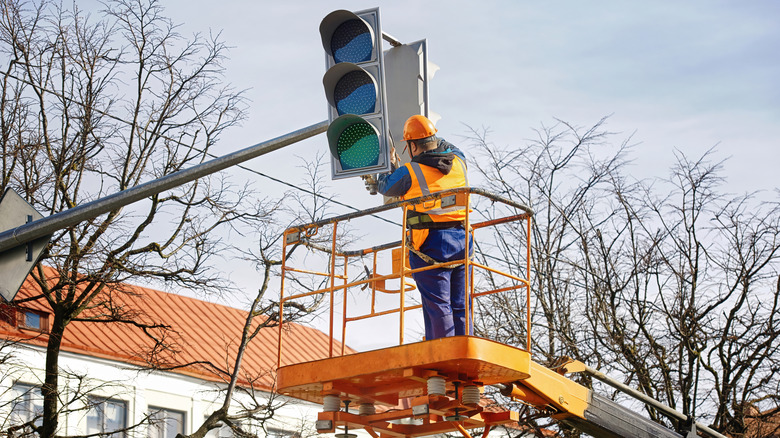Researchers Suggest Adding A New Color To Traffic Lights – Here's What It Would Be For
Transportation engineers at North Carolina State University have proposed that an additional color be added to existing traffic lights. This new color would be a white light, intended for the use of self-driving vehicles. This light is there to instruct autonomous vehicles (AVs) to direct the flow of traffic, while also telling human drivers on the same roads to follow the lead of the AVs around them. The objective of the additional traffic light color is to reduce overall fuel consumption and minimize the time it takes to travel through an intersection. To catch up, here's a primer on how our current traffic light colors originated.
The idea behind this, say researchers, is to open up the enhanced computing power that self-driving vehicles will bring to our roads, along with their ability to communicate with both the computer controlling the traffic and other autonomous vehicles using the road. These self-driving vehicles will know everything about traffic flow in real time. All that human-driven vehicles will need to do when they see the white light is to follow the AV ahead of them and do exactly what it does. If the self-driving car ahead stops, the human driver stops his or her car. If it proceeds through the intersection, the human driver follows it. This process of giving the AVs themselves some control over the flow of traffic is called the mobile control paradigm. In the event that there are not enough AVs in the intersection to provide this level of control, the intersection switches back to the standard red-yellow-green traffic light system.
What are some other benefits of adding a new color to traffic lights?
These same researchers had introduced an earlier concept of a white light intersection in 2020, but this version gave total control to the central traffic computer, with all AVs providing input before the main computer told the AVs how to proceed. The new version of the traffic control system uses distributed computing, which uses the computing power of all the AVs in the intersection to make decisions on how traffic should flow. This compensates for any communication delays with the central computer, keeping traffic flowing. For more on how conventional traffic lights actually work, we have the answers.
The researchers have also proven the effectiveness of their theory by using what they refer to as microscopic traffic simulators, which replicate traffic in the real world. They found that AVs definitely improve the flow of traffic, whether or not a new color is added to the traffic lights. They also discovered that the "white phase" improves traffic flow even further while reducing overall fuel consumption. This is due to the reduction in stop-and-go traffic through the intersection when AVs are present. Another interesting finding is that the more AVs there are in the intersection, the fewer delays there are in getting through the intersection.
Of course, this entire concept relies on a sufficient number of AVs in our traffic systems to make this mobile computing paradigm work, as well as building out enough white light intersections. We are many years away from this, but there is a country in which traffic lights are blue.

